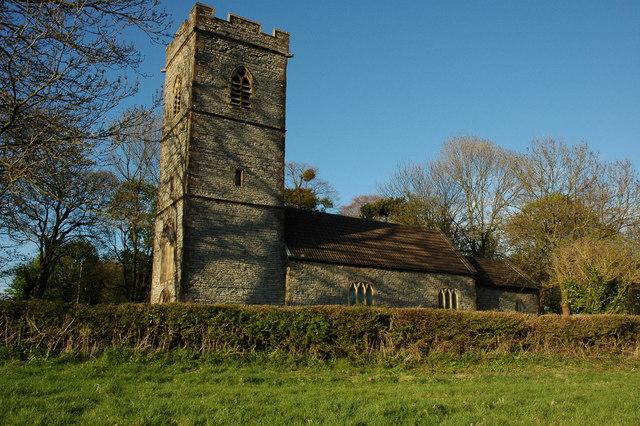St Mary
Llanwern, Wrexham
Llanwern is translated as ‘the church among the grove of the alders’, but today it is the sight, sound and smells of the nearby Llanwern steelworks which are the dominant feature of the landscape.

Situated on the edge of an ancient village on the Caldicot Levels and dedicated to the self styled last King of Britain.
Bishton, Gwent
Cadwaladr was the last Welsh ruler to call himself ‘King of Britain’ and he earned the title ‘blessed’ for his peaceful disposition. He died of the plague in 664AD.
The church and lands were given to the Bishop of Llandaff soon after 570, the original wooden church on this site was rebuilt in stone after the Norman occupation. ‘Bishton’ is a corruption of ‘Bishopstown’ and was the location of one of the residences of the Bishops of Llandaff for many centuries.
Some of the lancet windows are original, but the east window, the west tower window and the two south windows to the nave are Victorian insertions. Looking up you can see the four carved stone medieval heads known as the priest, the monk, the nun and the happy man. To your right is the late mediaeval octagonal font which is still used for christenings. Behind the altar the stained glass windows date from c1915 and depict Christ as the Light of the World and the Good Shepherd. Located near the north door is a stoup for holy water. In 1535 the church was valued at £2 13 shillings & 4 pence, approximately £ 2.65p.
Much of the original decorated and perpendicular church was restored in 1760 following the partial collapse of the tower. The porch is a 19th century addition and the Rectory opposite the church was built about the same time. The 15th century tower with it's single bell dating to 1663, was probably installed as a thanksgiving for the Restoration of the Monarchy. Services were in the Welsh language until 1828.
In 1949 whilst digging a new grave a corner of a mysterious stone coffin was damaged and a body with long white hair was glimpsed by the gravedigger. Although the body was turned to dust by the sudden influx of air the skeleton was identified as male. It is speculated that the body was that of Ifor Hael. He fled Cardiff for Bishton to avoid the plague with his friend Bishop Pascal of Llandaff, but they bought the pestilence with them and died in 1361.
Llanwern, Wrexham
Llanwern is translated as ‘the church among the grove of the alders’, but today it is the sight, sound and smells of the nearby Llanwern steelworks which are the dominant feature of the landscape.
Newport, Gwent
Beautiful gothic style church built in 1839 with impressive integral tower and stained glass.
Newport, Dyfed